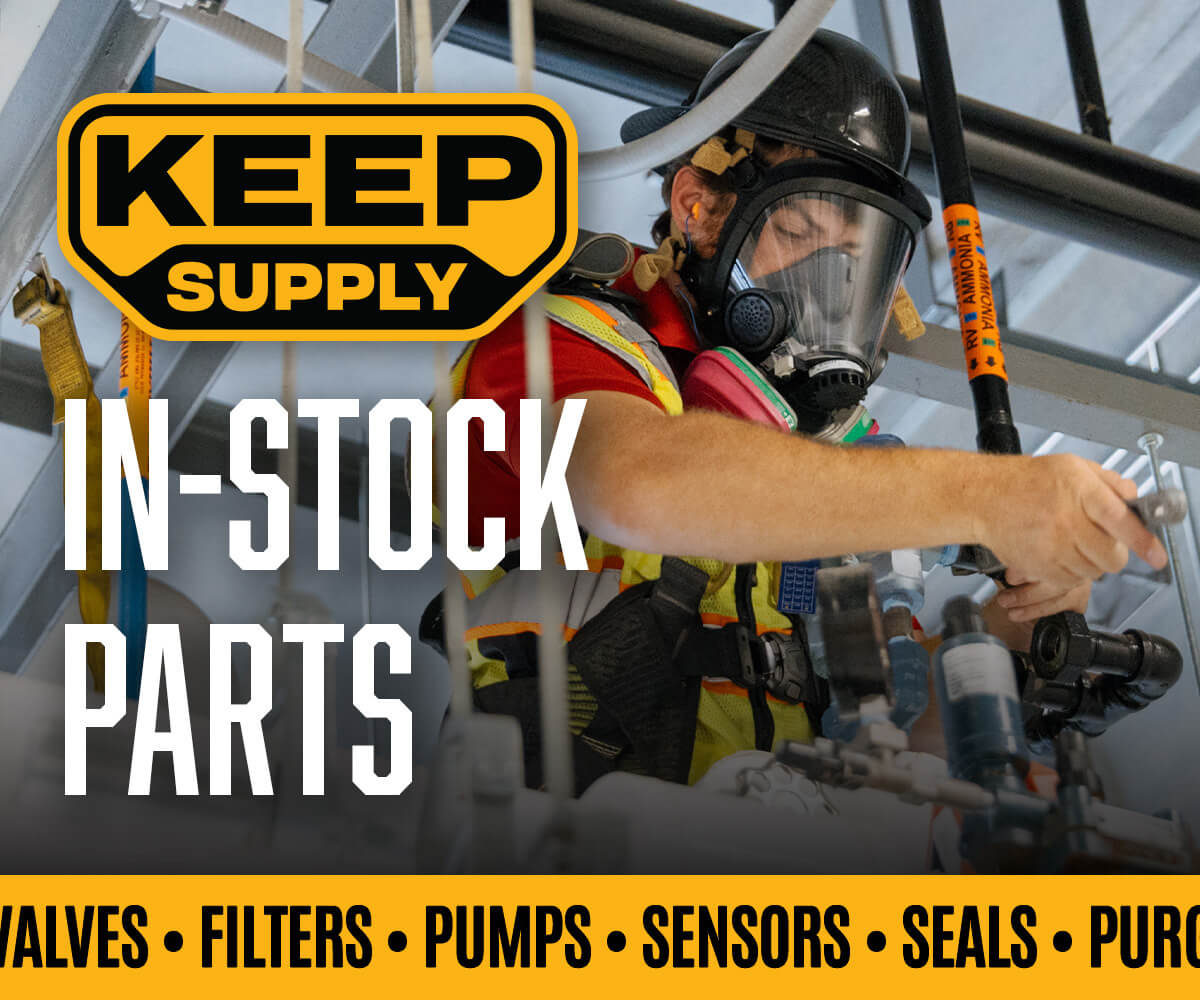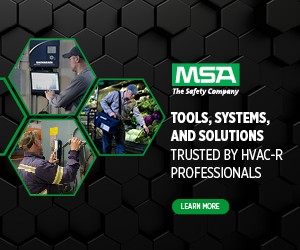Building the Base: IIAR RELEASES CO2 STANDARD, IIAR-2 UPDATE, NEW GUIDELINES
“The benefit of a standard is to bring consistency to safe systems,” said Trevor Hegg, vice president, product development, industrial refrigeration, and water systems for EVAPCO Inc.
Eric Smith, IIAR’s vice president, and technical director said the process of writing standards is never-ending. “New technologies come out that allow safety to be accomplished in new and
different ways and design standards do and should reflect new technologies and new observations in the industry and observations of what problems need to be addressed,” he said.
Also, how standards are being used can change. “Regulatory agencies rely more and more on IIAR standards when inspecting refrigeration systems and consequently we don’t want them to be
too lax or too onerous,” Smith said.
Maybe even more important is the knowledge and experience users gain over time that can improve a standard. “We’ve done these systems for so many years and generally we can find ways to
make systems inherently safer through experience. The standards capture history well,” Hegg said.
IIAR-2 has incorporated 47 years of history to get to its current state, Hegg explained. “Fast forward to CO2. There weren’t many standards dealing with CO2 , so you have a huge variety of different systems,” he said.
While IIAR was founded with a vision to create standards related to ammonia, end-users and manufacturers requested that IIAR develop a standard for CO2. The IIAR Board of Directors embraced
the idea and viewed it as a way to promote the use of CO2 and attract new members to IIAR, Smith said.
The new standard brings consistency to which systems should be designed and how to design safe systems, Hegg said.
IIAR has a long history of the development of standards for natural refrigerants. Over the course of the last 15 years, IIAR ammonia standards have become the basis for the model building codes in the U.S. and many other countries.
The recent publication of the IIAR CO2 2021 standard is part of a progression of efforts that started over 20 years ago. “My first inspiration for CO2 refrigeration was at an IIAR conference
in Long Beach, California,” said John Collins, industrial sales manager for Zero Zone Inc.
“During this conference, in a panel session led by Professor Will Stoecker and other leaders, a vision for IIAR to lead the development of CO2 refrigeration was first proposed to our organization.” Efforts to publish the IIAR CO2 Handbook were started with the initial publication in 2010.
Focused efforts to expand IIAR’sscope beyond just ammonia have continued with the development of the IIAR CO2 Standard starting in 2015 and the IIAR Hydrocarbon Standard starting in 2018. This sustained effort by many volunteer members of the Standards Committee, the Board of Directors, and staff have continued to build on IIAR’s position as a natural refrigeration organization.
Now, IIAR is focusing on CO2’s more central role in the world of natural refrigerants. “It is clear for many scenarios, particularly light industrial and commercial refrigeration, that there is a significant advantage to using CO2 over synthetics and often over ammonia systems,” Smith said. “CO2 systems are becoming more and more prominent, and we felt like there needed to be an association that would champion its use.”
In addition to providing guidance on utilizing safe systems, Hegg said standards can even provide more flexibility to end-users as they make decisions, particularly with new technology.
“Now they know what a CO2 system or what a hydrocarbon system will ultimately need,” he said.
IIAR-2 SAFETY STANDARD UPDATE
IIAR released the updated IIAR-2 Standard in September. The association has been working on the update for several years. “We had collected roughly 200 observations and questions that were
addressed before the entire publication was put out for public review. Subsequent to public review, we addressed 200 public comments. It was a very intense effort,” Smith said, adding that IIAR considers every comment.
IIAR also had bi-weekly meetings for about a year. Then those turned into weekly meetings for about another year. “There was a group of about 20-30 people who regularly participated in these meetings, and I can’t praise them enough for their dedication to getting this done,” Smith said. “Their dedication to meeting and discussing all of the comments and working through the
resolutions on a regularly scheduled basis was the only way that we would have been able to finish.”
Hegg said there is value in taking time to gather public comments. “When you get this whole body of people commenting on a standard, writing, commenting, and re-writing, it leads you down the path of having a dependable standard,” he said. “We take comments very seriously and many times we’re adjusting our language.”
Smith said it is difficult to write language that states only the intended meaning and does not imply anything else. “Every phrase must be considered and carefully constructed such that it removes ambiguity as much as possible,” he said.
The latest version sets members up for the next five to ten years, and Smith said IIAR standards are critical to natural refrigerants’ future. “If accidents were to become more prominent, then people would avoid using ammonia. It would be detrimental to not only our industry but also the economy,” he said, adding that the cold chain is a critical part of national infrastructure.
THE NEED FOR A CO2 STANDARD
Because CO2 systems were not all that prominent historically, there was scant guidance on their construction, installation, and maintenance. Collins said IIAR has created an important resource
to all of the industry by bringing together experts to crystalize what is needed to safely design, build, operate and maintain CO2 systems.
“CO2 is a developing area of refrigeration and we have been not only putting together a standard that captures the requirements for CO2 systems but also to some degree working with an evolving industry that is rapidly applying new technologies,” Collins said.
By creating a CO2 standard, IIAR is providing the minimum level of quality that manufacturers and end-users need, Smith said. “Also, one reason we did it is to be able to promote CO2 use in a
way that we thought would not be done otherwise,” he explained.
Tony Lundell, senior director of standards and safety for IIAR, said CO2 runs at higher pressures than ammonia, so it requires more strength integrity as it circulates. “There is a little more sophistication in its operations and maintenance,” he said.
The CO2 standard will standardize the means and methods of construction for industrial and large commercial refrigeration systems and provide a more even playing field to manufacturers and contractors in the industry. “This is obviously a benefit to owners and users so that people will be able to count on a minimum level of quality and safety when it comes to construction consistency,” Smith said.
Because CO2 systems were not all that prominent historically, there was scant guidance on their construction, installation, and maintenance.
This standard should be considered a companion standard to AHRAE 15, but it goes further than ASHRAE 15 by providing requirements for construction installation, testing, and maintenance that ASHRAE 15 does not address in detail, Smith said. Lundell noted that, “The standard would be applicable to industrial and commercial systems, meaning production facilities, grocery stores, and
warehouses.”
There are several layers of approval needed to develop a standard, Lundell explained.
First, the intention must be published by ANSI. Then a consensus body is formed by inviting interested persons to review the work and the process. When a standard is complete, the subcommittee, then the standards committee, then the consensus body, and finally the IIAR Board of Directors must all approve the content and the process in that order. “To be ANSI approved, a standard must be developed according to strict adherence to ANSI approved IIAR procedures and the ANSI Essential Requirements. ANSI verifies the process through periodic, thorough audits,” he said.
The same format was used for both IIAR 2 and the CO2 Standard. “The CO2 standard is really more analogous to most of the IIAR standards on ammonia. It addresses design, inspection, start-up, and maintenance in the same way several of the IIAR standards for ammonia cover them individually,” Smith said.
Collins said an effort is underway to get the CO2 standard adopted into the international and uniform codes. “Those approvals are pending,” he said. “We’re eagerly anticipating the outcome of those final hearings.”
The publication of the IIAR CO2 Standard brings the industry a valuable resource in a document that can be referenced as a basis for the proper use of this developing technology. Collins said
the CO2 standard fills a gap that has existed in many of our building codes and standards.
“However, because the industry until recent years hasn’t really utilized CO2 to the extent it is becoming used, it hasn’t been an identified gap,” Collins said. “This fills that gap and, now that we have thousands of CO2 systems around the world, it is timely. It has been a growing requirement and is only getting greater.”
The CO2 standard was needed to deliver beyond only general guidelines that previously existed, Lundell said. The CO2 standard developed includes more in-depth design requirements, as
well as installation, startup, inspection, testing, and maintenance minimum requirements.
Collins said an effort is underway to get the CO2 standard adopted into the international and uniform codes. “Those approvals are pending,” he said. “We’re eagerly anticipating the outcome
of those final hearings.”















